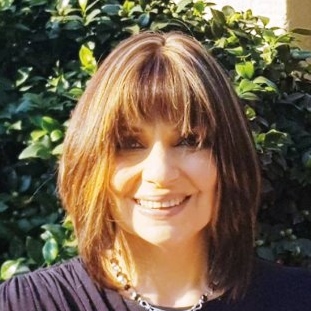
OpEds

Beauty Queen of Jerusalem shows ugliness of abuse
Spoiler alert: If you still plan to watch this series, you may want to do so before reading this.
The Beauty Queen of Jerusalem, a Netflix series based on the lives of the Ermoza family in Jerusalem during the early 20th century, may be a piece of historical fiction, but its scenes of domestic violence reveal a problem all too prevalent today.
The series, based on the captivating novel by Sarit Yishai-Levi, is set against one of the most tumultuous times in recent history – World War II and the Israeli War of Independence.
The story of Luna Armoza, beautiful first-born daughter of Gabriel and Rosa, unfolds against a backdrop of her parents’ loveless marriage. As Luna grows up, it’s clear that she is highly sensitive to her experience as a child growing up in a home where love and togetherness are absent, and she sets her mind to creating a fundamentally different marriage for herself.
As the apple of her father’s eye, Luna and her mother have a difficult relationship, with Rosa’s jealousy of the love her husband has for Luna manifesting in a coldness towards her eldest daughter. Luna feels stifled by her parents’ traditional values, which focus mainly on not doing anything to bring shame on the family, as she explores a successful career in the fashion world. Throughout the series, Luna often expresses her desire to get married and be independent of the strict rules governing life at home.
Luna eventually marries her childhood sweetheart, David Franco, who has returned from the war quietly tortured and full of secrets. One can feel his inner torment as he struggles with shell shock as a result of his service as a soldier in the British army in World War II. They make the decision to live with the Armoza family, as was often the custom in those times. As time goes on, David becomes increasingly possessive and controlling of Luna. He accompanies her to work in the dress shop, scrutinises every encounter she has with other men, and tells her how to dress and what she can and cannot say or do. As Luna went into the marriage independent and rebellious, determined to make a name for herself and often getting away with unorthodox behaviour, she finds herself struggling to play the role of the obedient wife.
As David’s behaviour becomes more explosive, Luna works hard to hide the abuse from her family’s prying eyes. One can clearly identify the signs of how domestic violence typically manifests within a relationship. Each time there’s an explosive event, Luna makes excuses for him and tries to cover it up as best she can.
In an abusive relationship, the cycle usually starts with a calm phase, demonstrated in the series during David and Luna’s honeymoon. They are a beautiful couple, basking in their shared happiness. However, at night, Luna wakes up to find David sleeping on the floor. He confides about his emotional problems due to shell shock from the war and she is compassionate, believing that her love will heal him. He omits to tell her of his time spent in an insane asylum and that he spent very little time actually fighting in the war due to his mental condition. This kind of manipulation and garnering of sympathy is often a tool used by abusive partners to hook their victim.
Once the calm phase is over, the victim begins to experience the tension building phase. During this phase, the partner begins to display abusive behaviour that slowly increases in intensity and frequency. The victim begins to walk on eggshells, trying to prevent an abusive outburst. This behaviour may start with irritability, impatience, and possessiveness and slowly build up to emotional outbursts, verbal attacks, and shortness of temper. Luna is no exception as she bows to her husband’s demands and clearly begins to lose herself in the process. In spite of her best efforts, the tension becomes evident and she begins to feel increasing anxiety. For David, as with most abusive partners, as the outside world begins to feel more out of control, he turns to his relationship to make him feel in control again.
When Luna asks David if she can go to London for a few days with her British friend, the tension reaches a peak, and he beats Luna to a pulp in an attempt to regain a sense of power and control. In domestic-abuse situations, the abusive incident may look different every time or from relationship to relationship. David has exploded a few times already prior to this event. He has broken things in the home, slapped her, shamed her, blamed her, used emotional abandonment tactics like silent treatment, and manipulated her. He also raped her when she wouldn’t give in to his demands. Most often, the abusive incidents escalate with each cycle, as is evident in this series when Luna eventually lands up in hospital with broken bones.
Often once the tension has abated, the abusive partner may feel inclined to make amends for their behaviour. They show remorse, apologise, shower their partner with affection, and promise they will never do it again. At this point, the abusive partner doesn’t feel the tension anymore, however, the opposite is true for the partner on the receiving end. Luna’s constant fear of David returning to their home is evidence of this.
Watching this series, one can only experience a sense of dread and helplessness up to this point. Once a victim is entrenched in an abusive relationship, it’s very difficult to extricate themselves. This isn’t to say that it cannot be done.
The first and most important step is to recognise that it’s an abusive relationship. Only then can we begin to seek help. The last physical attack is the last straw for Luna, and with the support of her father and sisters, she realises that she needs to get a divorce.
The strength of insight is the ability to recognise red flags before becoming trapped in the relationship. By becoming educated on the phenomenon of domestic violence, we may be able to prevent either ourselves, family members, or friends from becoming deeply involved in an abusive relationship.
From the outset, the warning signs are always there: jealousy, control, insults, belittling, humiliation, nastiness, isolation, and gaslighting are some examples. While these may appear to be obvious, they can take subtle forms which aren’t so easy to pick up on initially. The tell-tale sign is when a pattern of behaviour repeats itself, with control and domination becoming evident. However, with some knowledge, one may escape this misery.
The Beauty Queen of Jerusalem is a clear indication that abuse continues to thrive in spite of all the progress society has made. However, once families begin to recognise abuse within their own circle, victims can be supported to leave, and the cycle can be broken.
If you or anyone you know is in an abusive relationship, please contact Koleinu SA for support.
- Rozanne Sack is a co-founder of Koleinu SA, a helpline and advocacy organisation for victims of gender-based violence and child abuse in the Jewish and wider community.









Lawrence Nowosenetz
August 17, 2023 at 1:57 pm
Excellent explanation of domestic abuse. Family members should also help in detecting early signs of abuse from the description in this article of the syndrome.